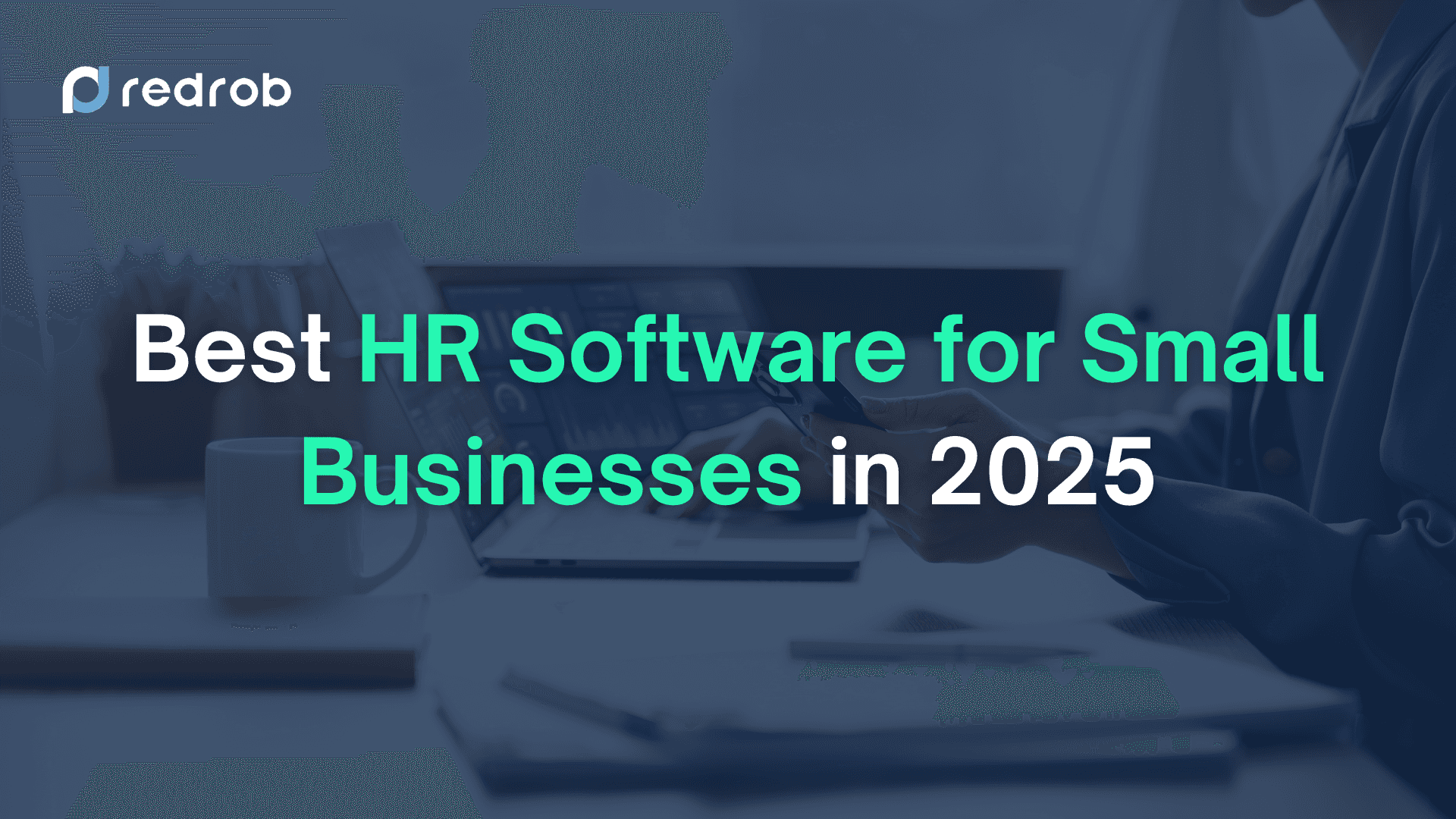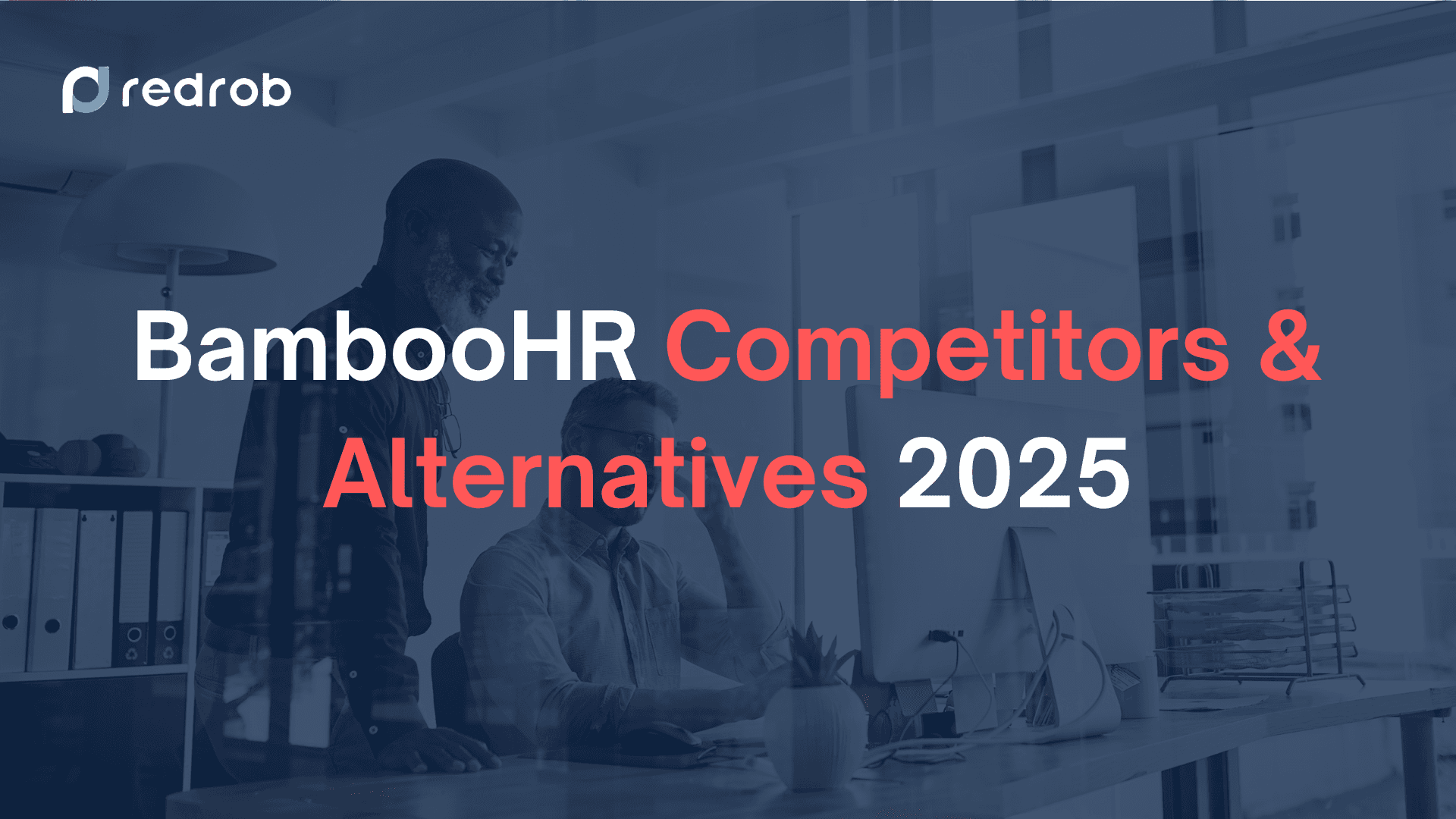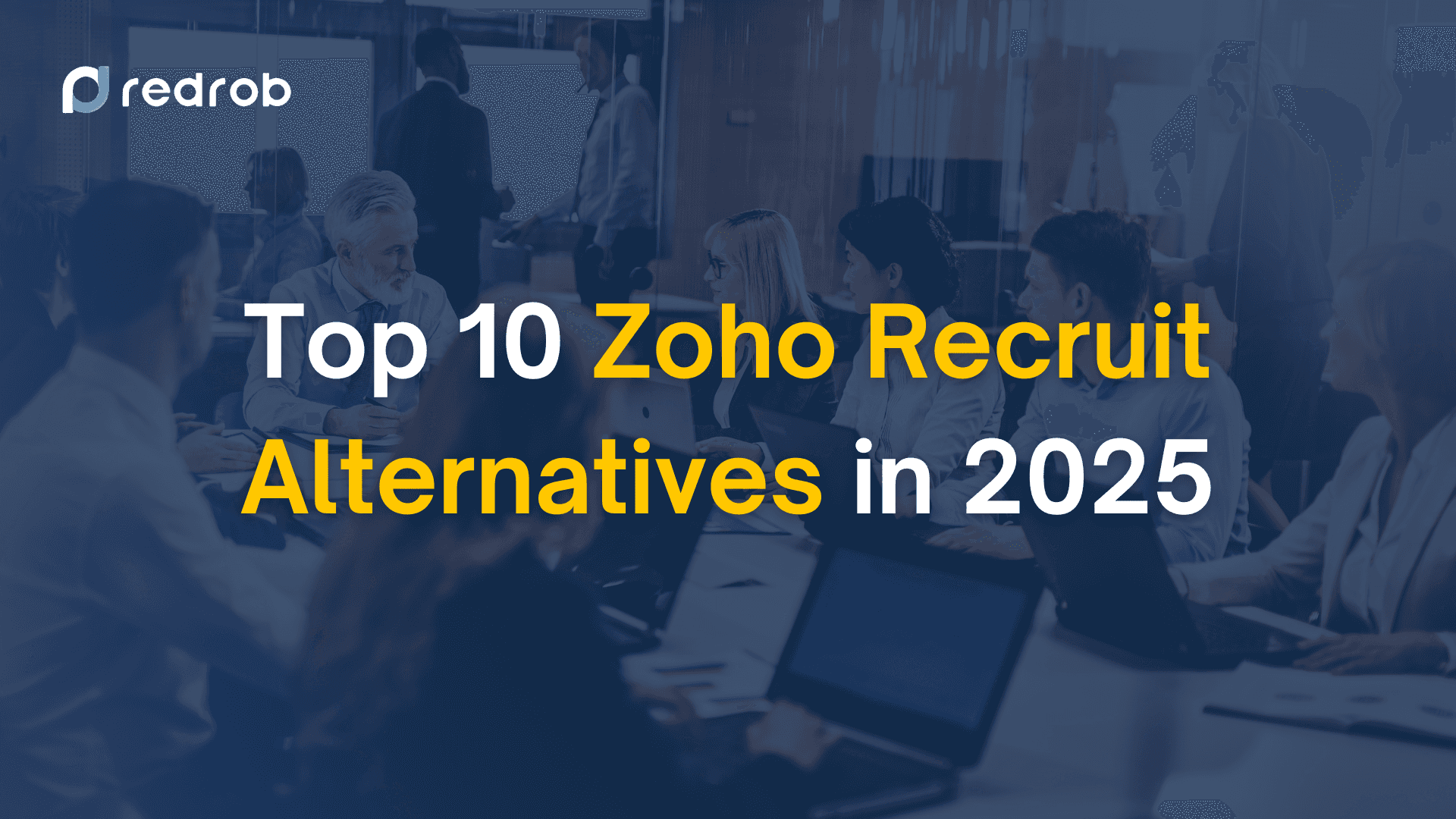Recruitment Technology
8 mins read
•
Sep 17, 2024

Soumyata Singh
Older ways of hiring now seem to fall short for the expectations of new age job seekers and fast-paced businesses. But thanks to progressive recruitment tech, hiring and onboarding is a lot different, better, and faster.
Recruitment processes are now more streamlined with AI-powered candidate assessment and tracking tools. While companies can easily track, assess, and hire the right candidates, candidates have a better access to competent job opportunities in the respective industries.
Something You Should Know
According to a source:
44% of recruiters think that artificial intelligence in the latest recruitment tech can save recruitment time.
41% think that it provides valuable insights.
39% say that it makes their jobs easier.
Recruitment tech isn't just about new tools; it's about using them effectively. Falling behind could mean losing top talent to companies that know the use of these latest innovations. This blog discusses the new dimensions in recruitment technology and how you should approach it.
Applicant Tracking Systems (ATS)
Applicant Tracking Systems (ATS) are a critical part of recruitment tech. They simplify and streamline the entire hiring process, from posting jobs to selecting the right candidates. By automating repetitive tasks, ATS saves you time and ensures smoother collaboration between hiring teams.
Role of ATS in Streamlining Recruitment
An ATS organizes and automates many parts of recruitment. It helps post jobs, track applicants, and manage candidate data in one place. This automation cuts down on manual tasks, giving you more time to focus on quality hires. 78% of recruiters say ATS makes things easier for them.
Primary Features of ATS Include
Job Listing Management: ATS allows you to manage multiple job listings in one place. You can post openings across several job boards and track applications with ease. This feature simplifies your workflow, ensuring no opportunity is missed.
Resume Screening: Resume screening is another crucial feature of ATS. Instead of sorting through piles of resumes manually, ATS uses algorithms to find the best matches. It filters candidates based on keywords and qualifications, cutting down your screening time significantly.
Collaboration Tools: Collaboration tools in ATS make teamwork easier. These tools allow your team to share candidate feedback and notes in real time. Everyone stays on the same page, improving decision-making and reducing delays in the hiring process.
Popular Examples
Some of the most popular ATS platforms include:
Redrob: Helps you track, assess, and analyze candidate suitability beyond their resumes.
Greenhouse: Known for its customizable features and robust reporting tools.
SmartRecruiters: Offers a user-friendly interface with integrated CRM capabilities.
Lever: Combines ATS and CRM functions, helping teams collaborate more effectively.
Workday: Provides a comprehensive solution that integrates with other HR tools, ideal for larger companies.
Redrob’s comprehensive ATS can make things more manageable for you and reduce candidate vetting time by 60%. Explore its features.
Let us move further to the role of artificial intelligence in the rapidly progressing recruitment industry.
Artificial Intelligence in Recruitment
Artificial intelligence (AI) is transforming recruitment tech, making hiring smarter and faster. AI tools are being used to screen resumes, match candidates, and engage applicants through chatbots. This technology reduces manual work and helps you find the right fit efficiently.
Utilizing AI for Resume Screening and Candidate Matching
AI simplifies resume screening by scanning for relevant skills, experience, and qualifications. Instead of manually reading through hundreds of resumes, AI identifies top candidates in seconds. It also helps match candidates to roles based on their past work and skill sets. According to LinkedIn, 67% of recruiters say AI makes their hiring process faster. This highlights AI's critical role in improving recruitment tech.
Use of Chatbots for Candidate Engagement and Screening
Chatbots enhance candidate engagement by answering questions and collecting information. They provide real-time support, making the application process smoother for candidates. Chatbots can also screen candidates by asking basic questions about qualifications and experience. This saves you time by checking off unqualified applicant profiles early in the process.
Optical Character Recognition for Easier Application Processes
Optical character recognition (OCR) is another AI feature making application processes easier. OCR extracts text from uploaded documents like resumes and cover letters. It then converts this information into searchable data, allowing your ATS to process applications more quickly. OCR ensures that even scanned documents are easily analyzed for candidate information.
Next, let’s look at how video interviewing platforms are redefining the interview process in modern recruitment tech.
Video Interviewing Platforms

Video interviewing platforms are essential aspects of recruitment tech, especially for managing remote hiring processes. They streamline interviews, making it easier to connect with candidates no matter their location. These platforms offer tools that help you schedule and conduct interviews efficiently.
Managing Interview Processes Remotely
With video interviewing, you can manage interviews without geographic restrictions. Whether you’re interviewing locally or internationally, these platforms allow you to connect with candidates in real-time. According to a report by Gartner, 86% of companies are now using video interviewing as part of their hiring process. This shift shows the growing importance of video platforms in modern recruitment tech.
Important Features of Video Interviewing Platforms Include:
Scheduling: Scheduling interviews gets simpler with these platforms. You can integrate them with calendars to avoid back-and-forth communication. Candidates select a time that works for them, which reduces delays and makes scheduling faster.
Pre-recorded Video Interviews: Candidates can answer questions at their convenience using pre-recorded video interviews. You can review their responses on your own time, making it easier to assess multiple candidates efficiently. This feature saves time for both you and the candidates while maintaining a structured interview process. In fact, Spark Hire reported that its users reduced interview time by 50% using pre-recorded interviews.
Best Examples
Some popular video interviewing platforms include:
Spark Hire: Known for its pre-recorded video interview features and simple interface.
HireVue: Offers AI-powered interview assessments and scheduling tools.
VidCruiter: Provides robust scheduling features and integrates well with ATS platforms.
In the next section, let’s explore how candidate assessment continues to improve with newer technologies.
Candidate Assessment Technology
Pre-employment assessments make recruitment more effective with modern recruitment tech. They allow you to evaluate candidates beyond just their resumes. These assessments help identify top performers by testing for skills, cognitive abilities, and personality traits that match your job requirements. According to a study, more than 82% of companies use some form of pre-employment testing to improve their hiring process.
Types of Assessments

The most common types of pre-recruitment assessments are:
Cognitive Assessments: Cognitive assessments test a candidate's ability to solve problems, think critically, and learn quickly. These tests are useful in predicting future job performance. By using cognitive tests, you can ensure that candidates have the mental abilities necessary for the role.
Personality Assessments: These help you understand if a candidate will fit your company's culture. Personality assessment tests evaluate traits like emotional intelligence, teamwork, and leadership style. They are particularly helpful when you’re hiring for roles that require strong interpersonal skills.
Role-Specific Assessments: Role-specific tests assess the technical or functional skills required for a specific job. Whether it’s coding for a software developer or sales techniques for a salesperson, these tests give you a clear view of the candidate’s abilities.
Best Examples of Candidate Assessment Tools
Harver: Known for its wide range of assessments, from cognitive tests to personality evaluations.
TestGorilla: Offers over 200 test types, including coding, cognitive, and soft skill assessments.
CodeSignal: Specializes in coding assessments, making it ideal for technical hiring in recruitment tech.
With Redrob, you get 3500+ customizable candidate assessment tests for IT professionals and other roles. Know more about it and upgrade your candidate assessment strategy now.
Now, let's see how recruitment tech can help you enhance candidate relationship management.
Enhanced Candidate Relationship Management (CRM)
Building long-term relationships with candidates is just as important as filling open positions. Candidate Relationship Management (CRM) tools help you let you do this while ensuring you have access to a reliable talent pool for future roles.
Building Long-Term Candidate Relationships
Effective CRMs allow you to keep in touch with candidates even after the hiring process. By nurturing these relationships, you can create a positive experience for both active and passive candidates. This ensures that when new roles arise, you already have engaged talent ready to apply. Candidates prefer to reapply to a company that keeps in touch.
Integrated CRM Modules Within ATS
Many ATS platforms now come with integrated CRM modules. These modules let you track candidate interactions, store data, and send personalized updates. With integrated CRM tools, you can manage both recruitment and candidate relationships from one place. This integration streamlines the process, allowing for better communication and follow-up.
Examples of Enhanced CRM Tools
SmartCRM: Popular for its intuitive design and seamless integration with existing ATS platforms.
Beamery: Focuses on building personalized candidate journeys, from application to hire.
TalentLyft: Offers advanced analytics to help recruiters improve candidate engagement over time.
Let’s see how data analytics and predictive tools support better decision-making.
Data Analytics and Predictive Tools
Data analytics and predictive tools are all over the industries. These tools help you make better hiring decisions by analyzing data and predicting future needs. Companies that use data-driven recruitment see improved efficiency and better results.
Leveraging Data for Better Recruitment Decisions
Data analytics helps you understand which strategies are working and which aren’t. You can analyze metrics like time-to-hire, candidate drop-off rates, and interview performance. This information helps you refine your recruitment process and improve your hiring outcomes. Recruitment technologies make this data easily accessible, giving you a competitive edge.
Predictive Analytics for Future Hiring Needs
Predictive analytics goes one step further by forecasting future hiring demands. These tools analyze past hiring patterns, company growth, and market trends to predict what roles you’ll need to fill. This helps you stay prepared and ensures you’re never caught off guard by staffing shortages. PredictiveHire, for instance, uses AI to predict the best candidates for future positions, streamlining talent pipelines.
Examples of Analytics Tools
SurveyMonkey: This tool gathers feedback from candidates and hiring teams. It provides valuable insights into what’s working in your hiring process.
PredictiveHire: An AI-powered tool that predicts candidate success based on behavioral data. It helps you identify top talent quickly.
Conclusion
Recruitment technologies have completely changed how companies approach hiring. AI now plays an important role in candidate matching, while chatbots simplify communication. Video interviewing platforms allow remote interviews, and ATS helps manage job listings and resumes more efficiently. This not only saves time but also improves decision-making for hiring teams and authorities. We hope this blog gives you the necessary insights into all of these aspects.
Future Trends and the Potential for AI and Machine Learning
Looking ahead, AI and machine learning will drive even more changes in recruitment tech. AI will likely continue to improve candidate screening, bias reduction, and job matching. Machine learning algorithms could predict hiring needs and analyze candidate potential more accurately. In fact, studies predict that AI in hiring will grow at 37.3% CAGR in the next five years.
Importance of Adapting to New Technologies for Improved Recruitment Outcomes
Adopting new tools is essential to staying competitive. Failing to adapt may lead to missed opportunities or hiring inefficiencies. By embracing the modern tools and tech, you can look forward to a smoother recruitment process and better outcomes. You can:
Automate tasks to save time.
Improve candidate selection with data based decisions.
Offer excellent candidate experience.
Conduct remote interviews easily with video platforms.
Predict future hiring needs and trends to be prepared.
Access the Best of Modern Recruitment Tech With Redrob
Ready to incorporate the best technologies and features to vitalize your recruitment processes? Redrob offers you one of the best platforms to meet your specific hiring needs.
With our solutions, you can:
Cut down candidate screening time by 60%
Filter candidate profiles to pursue only the best ones
Get centralized management for all recruitment tasks
Make hiring 92% faster
Onboard from the top 10% of talent
SignUp to get to the next level of hiring. Start your FREE Trial Now!



